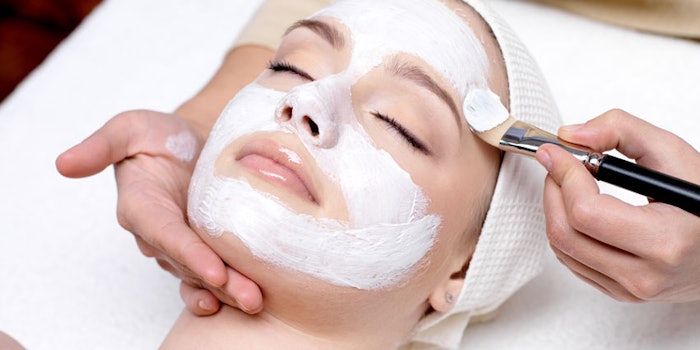
Face & Body showcased Erin Madigan Fleck, N.M.D., Naturophoria/Co-founder Intellective Esthetics, and Shannon Esau, CEO of Allison Clinical Enterprises to discuss topics based on skin science for the Chemistry Spa Pod that took place on Aug. 27, 2018. Madigan Fleck discussed toxicology and how to minimize it in our daily lives, while Esau explained how to customize peels for your clients.
Operation Protection: Minimizing Exposures in Toxicology
Fleck began her discussion by breaking down what toxicology actually is by explaining how it is a branch of science that deals with nature and the human body. Toxicology is extremely important when practicing holistic treatments, and it effects and detects toxins and poisons that enter into the body.
These different types of toxins can come from numerous sources like: industrious chemicals, hazardous waste, radioactive waste, agriculture chemicals and waste, medications and drugs and consumer products. Toxicology can be detected as acute, intermediate or chronic, and the levels of toxicity rank with acute meaning the toxins have been present for 24 hours, subacute ranging from one month or less, subchronic ranging from one to three months or chronic, which means toxins have been present for greater than three months.
Routes of Exposure:
- Inhalation - air pollution, vapors in the workplace
- Oral - food, water, medications
- Transdermal - solvents on skin
- Intravenous or Intramuscular injection - medication, illicit drugs
- Showering with water contaminated with organic solvant
- Direct contact with skin
- Ingestion - contaminated water
- Absorption by skin, inhalation or injection places toxins directly into bloodstream
- Smoking - cigarettes have over 7,357 chemicals
Madigan Fleck made a strong point that the main method of prevention deals with truly being more aware. There are tests and methods of helping after someone has been diagnosed due to toxins, but prevention lies within doing extra research and being more aware of your daily items from the mattress you sleep on to the pots and pans you use in the kitchen.
Personalized Peels for Today's Client
Esau broke down the different approaches you should take with your clients depending on why they are seeking a facial as well as what peels to actually use. To start, when prepping the skin be sure to cleanse. Esau implores that cleansing is an extremely important step that should never be skipped. Then reduce lipids and excess cellular build up with AHAs or enzymes. Dry the skin thoroughly before beginning the peel.
Pro-Youth/Aging Clients
Home care should include antioxidants and protection used in the morning with a gentle rejuvenation in the evening. While in the treatment room, Esau explained how you should aim to provide your clients with a corrective facial and balanced rejuvenation.
Acids to use:
- Trichloroacetiac Acid (TCA) - creates disruption in the skin to loosen keratin bond, minimizes fine lines and smooths and softens the skin.
- Red Wine Vinegar / Acetic Acid - firms and tightens the skin
- Partner these two acids together for a beneficial combination that works both below and on top of the surface of the skin.
Acne
The goal for treating acne is to reduce bacteria, increase cellular exfoliation and promote healthy wound healing. Esau explains how acne is a wound, so when the wound healing process is disturbed it can cause scarring. Therefore, it is good to use acids that bring wound healing properties to the skin.
Acids to use:
- BHAs / Salicylic acid - goes into the epidermis and begins to dissolve, softens and smooths skin
- Alpha Hydroxy Acid (AHA) - can be good for built up cellular wall
- Flower acids - antibacterial, anti-inflammatory and natural tyrosinase inhibitor
- TCAs - increases cellular exfoliation, smooths acne scarring
- Hydrogen Peroxide - can be used as a base, provides oxygenation
Rosacea
The main goal for rosacea skin is to rejuvenate the skin. Providing peels to the skin can reduce redness, increase wound healing and strengthen the skin.
Acids to use:
- Hibiscus flower extract - increases cellular exfoliation, boosts glycosaminoglycans, increase cellular energy, skin strengthening without a lot of irritation
- Salicylic acid - anti-inflammatory and antibacterial
Pigmentation
Any peeling you do can help lighten pigmentation. However, Esau explains that it is important to keep in mind that peels inhibit melanin production, but it does not change pigmentation.
Acids to use:
- Azelaic acid - inhibits melanacyte activity, antibacterial and anti-inflammatory
- Kojic acid - tyrosinase inhibitor
- Arbutin
Esau finished her discussion with noting that no matter what type of client, skin type or peel the most critical process of a peel is post care. If your client is not going to invest in the proper post care routine, then they can easily undo all of your hard work.










